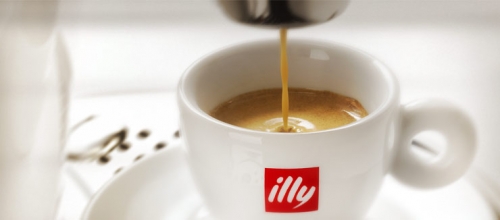It is probably the sentence that any beginning Italian students would be able to say when entering a café in Italy "Un espresso, per favore". But it may be more complicated than you think if you consider how many types of coffee beverage you can order in Italy. As well illustrated in a famous 1997 Bozzetto's animated cartoon, where the habits of Italians are compared with all other Europeans, having a coffee in Italy may require an extensive tutorial. It is a fact that you can have at least a dozen of different variations of beverage including coffee to enjoy la dolce vita. The following list describes the most common types:
Doppio: two regular espresso in the same cup (50 ml)
Lungo: A longer espresso, containing more water and therefore less strong (35 ml)
Ristretto: A concentrated espresso; a very strong coffee! (20 ml)
Macchiato caldo: Espresso with a few drops of warm milk
Macchiato freddo: Espresso with a few drops of cold milk
Corretto: Espresso with a shot of liquor (usually grappa or anisette)
Con panna: Espresso with whipped cream on top
Americano: Coffee made adding warm water over grinded coffee
Freddo: Cold espresso served with ice in a glass
Cappuccino: Espresso (1/3) with warm milk (1/3) and milk froth on top (1/3)
Caffè mocha: A cappuccino topped with a sweet cocoa powder
Caffèlatte: A glass of warm milk with an espresso added in it
Marocchino: Cappuccino with chocolate dusted on top
Decaffinato: Espresso made with decaffeinated coffee
Classic espresso is technically hot boiled water mixed with ground coffee beans in a specific ratio. That is the key word: ratio. In fact there are approximately 0.3 ounces of coffee to one fluid ounce of water in a single shot espresso. About the same quantity is used to prepare a drip-brewed coffee cup, which instead contains 8 fluid ounces of water. So it is intuitive that the concentration of an Italian espresso is eight time the one of a regular average cup of coffee at an American restaurant. Also, due to the higher than atmospheric pressure involved, in the first case the mixture of water and steam reaches temperatures well above 100 °C, causing a more efficient extraction of caffeine and flavors from the grounds, and resulting in a stronger taste than the one obtained by drip brewing.
It is thought that the word "espresso" originates from the procedure to prepare the coffee, by forcing hot water at high pressure through the aromatic ground powder. However, this word in Italian also means "speedy, quickly"; in fact there are treno espresso (a faster train), and raccomandata espresso (a piece of mail delivered quicker than regular mail). Knowing that Italians are always on the go and chronically late, I would lean toward the second origin.
The history of Italian coffee goes back to the late 1800s when Angelo Moriondo in Turin first presented a patented way to prepare the hot beverage having water pressurized by steam passing through the ground coffee. A few years later other Italians improved the procedure by introducing on the market an espresso machine that could make a coffee in a few minutes.
But the popularity of homemade coffee really became widespread with the introduction of the mass produced Moka, the machine invented by Luigi De Ponti and patented for businessman Alfonso Bialetti in 1933. Still today the Bialetti company produces the "Moka express", an aluminum pot with bakelite handle, which has become an iconic design, and considered a piece of art displayed at the MOMA in New York City.
The difference between the homemade coffee and the one you order in a café is the pressure of coffee extraction, which is about 22 psi in the Moka and 130 psi for a real espresso. Also the foam emulsion produced by a Moka is not as dense as the crema (cream) that you can taste on top of an espresso shot.
Whatever type of coffee you order, if you are on a budget, make sure that you sip it by standing at the counter. Sitting at a table can double the price and if you happen to be in San Marco Square in Venice, a single shot espresso can easily cost you about ten dollars!
You could say "Who cares, I am in Italy". And that's exactly what counts. How can you have a bad time when you start your day sipping an aromatic coffee, in front of the Venetian Laguna or the Spanish Steps in Rome, with a street artist singing Volare...



